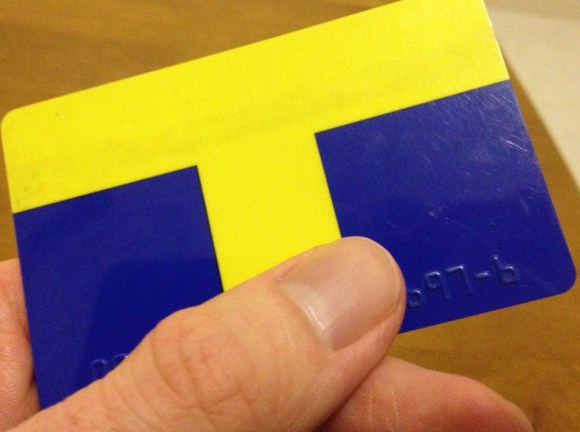Whichever way you look at it, life in Japan is expensive.
As well as Japan’s food, drink and fuel ranking among the world’s most expensive, compared to many western countries, land in particular is sold at a premium, meaning that accommodation can be costly, and even those with enough capital to consider purchasing a car often abandon the idea when they realise that they cannot afford to buy or rent the necessary parking space.
CNN’s “World’s Most Expensive Places to Live 2012” placed Tokyo and Osaka first and third, respectively, and thanks to the strong yen and weak dollar/euro/everything, coming to live in Japan has never been more financially challenging.
With this in mind, budgeting expert Yoko Hanawa at Yahoo! Japan shares some ways in which Japan’s businessmen and women tackle everyday life in this tough financial climate, and introduces a few ideas of her own that are worth paying attention to.
According to a recent survey conducted by Shinsei Banking Corporation, the average salary-man’s daily spending money is now almost half of what it was during Japan’s economic golden age in the 1990s, coming in at around US$500 per month.
In many Japanese households, the wife is in charge of the finances, and doles out her husband’s “pocket money” that he must use for small, day-to-day expenses like lunch, snacks, drinks, cigarettes and the like.
According to the bank’s data, the average amount spent on lunch, social drinks, snacks and day-to-day necessities has fallen almost 50% in 20 years. While in the past, salary-men and women would duck in and out of taxis on a regular basis and dine out sometimes up to six times a month, the average city worker now treats themselves to an evening meal in a restaurant just once or twice every four weeks, and relies on the, thankfully, ever-punctual rail network to get around town.
As a man who spent the entire of 2011 as a full-time student living in Tokyo, I can say from personal experience that life on a budget here is tough. Rent, utility bills, groceries, a mobile phone and commuting costs soon add up, and at one point I was getting by on around $1000 a month, so it’s a shame that Ms. Hanawa’s sage advice hasn’t cropped up until now!
All the same, for those of you planning on moving to Tokyo, or simply interested in how the average city-dweller gets by, there are some genuine gems of info here, so listen up…
“The average businessman spent an impressive 746 yen on his weekday lunch in 1992, compared to just 500 yen today,” tells Ms. Hanawa. “As a result, today’s businessperson has to be incredibly frugal if they want to make their allowance stretch.”
While 746 yen (US$9.50) might not sound like all that much, bear in mind that this amount would have been spent five or six days a week, and this figure is taken from the 1990s, at which point the yen was worth much more than it currently is.
It’s interesting to think that, with salary-men spending so little on their workday lunch, stores like Yoshinoya and Sukiya have, in the hope of improving sales, recently introduced new items to their menus that cost more than this amount. Will the average salary-man take to them, or simply stick to regular-old gyūdon in an effort to save the pennies?
So how do people save money these days? Are they simply cutting the amount they spend on their lunch, much to the detriment of their health?
“Nowadays, people carry personal water bottles or tumblers,” comments Ms. Hanawa. “By doing so, they avoid the need to buy soft drinks from convenience stores and vending machines.”
Although vending machines are part of what makes Japan, and stories of machines selling everything from drinks to underwear have been told so often that they’ve seemingly become fact, it’s true that Japan has seen a sudden boom in personal drinks bottles, with a whole host of sizes and designs hitting store shelves in the last couple of years.
In addition to being marketed as “eco” and kinder to the environment than one-use plastic bottles, personal drinks bottles no doubt help cut small expenses. With the average bottled drink costing 120 yen, at a rate of one purchase per working day, the average person could be spending anything up to US$450 a year on beverages alone.
The little things really do make a difference, don’t they!?
According to the expert, while economising is essential in today’s society, it’s important that we judge how and when to save money, warning that the way we economise today will shape our life tomorrow…
“Lots of young people target their daily lunch allowance or try to control the amount they spend on going for social drinks with colleagues, but this could have an adverse effect on us. If we rely on nothing but cheap junk food every day, we put our health at risk. On the other hand, if we remain at our desks eating a meagre packed lunch while everyone else going out to eat or buy a snack, we risk cutting ourselves off from our peers and missing out on important information.”
So while we should be careful of how we spend our money, we should be equally focused on how budgetary cuts affect our social and work lives?
“Everything in moderation; have lunch out twice a week, bring a packed lunch the other days, but don’t be merciless since it will ultimately have a negative effect on your health.”
The lady makes a good point; after all, what’s the point of saving money every day if it means we wear ourselves down and get sick because we’re fuelling our bodies with little more than salt, carbohydrate and fat? And if we do get sick, who will show sympathy or pick up the slack at the office while we’re out when we no longer socialise with our workmates? It’s a vicious circle…
Some other tips that Ms. Hanawa has for readers include shaving unnecessary costs by removing additional services our mobile phone providers offer like call waiting or voicemail, or those additional “lifestyle” applications that we’re tempted to sign up for for just a couple of hundred yen a month. They all add up…
“Make use of store point cards,” advises the mistress of money. “If you frequently go to a convenience store, use their card; it’s free, and you rack up points that you can redeem later on things that you need.”
That last tip might be a little trickier than it sounds. While point cards are certainly very useful, and places like large electronics stores offer as much as 10% in loyalty points of the value of any item bought, it’s not unusual for everywhere from cafes to convenience stores to offer their own unique card, so keeping track of them all or finding the correct one in a stack of 20 can become something of a headache.
That said, the rewards with these cards are genuine, and it’s a great feeling to be able to say “I’ll pay for it with my points” every so often.
▼My faithful T-Point card. Six years and still going strong.
For all her sensible advice, though, Ms. Hanawa’s last few tips came as a bit of a surprise to this writer, as she paints a– shall we say “traditional”– image of the typical household, in which the man goes out to work while his wife stays at home with the child, buying expensive things with his money…
“The man alone shouldn’t bear the financial burden; while things like imported strollers, shoes and livingroom water dispensers look nice and convey the image of being well-off, they are often the cause of financial trouble.”
A living-room water dispenser!? Does anyone have one of those? I must not have rich enough friends…
Source: Yahoo! Japan


 How much more expensive is it to use microwave rice packs instead of cooking/freezing your own?
How much more expensive is it to use microwave rice packs instead of cooking/freezing your own? Top five Japanese prefectures for childhood education expenditure would make any wallet shudder
Top five Japanese prefectures for childhood education expenditure would make any wallet shudder Coca-Cola’s new Coke ON subscription service makes Japanese vending machines more fun to use
Coca-Cola’s new Coke ON subscription service makes Japanese vending machines more fun to use How much money do you need to live in your own apartment in Japan?【Survey】
How much money do you need to live in your own apartment in Japan?【Survey】 The top 10 traits of “domestic” women in Japan, according to Japanese men
The top 10 traits of “domestic” women in Japan, according to Japanese men Icon’s Mac & Cheese Burger contender for best burger in Tokyo【Taste test】
Icon’s Mac & Cheese Burger contender for best burger in Tokyo【Taste test】 Starbucks at Shibuya Scramble Crossing reopens, but is it really bigger and better than before?
Starbucks at Shibuya Scramble Crossing reopens, but is it really bigger and better than before? Studio Ghibli unveils new goods that tip the hat to The Cat Returns
Studio Ghibli unveils new goods that tip the hat to The Cat Returns Foreign traveler caught trying to sneak into Japan by climbing down rope from cruise ship
Foreign traveler caught trying to sneak into Japan by climbing down rope from cruise ship One of Japan’s oldest castles now lets travelers spend night on the grounds, drink in its keep
One of Japan’s oldest castles now lets travelers spend night on the grounds, drink in its keep Orange Juice Crisis ’24 – Japan’s OJ supplies drying up
Orange Juice Crisis ’24 – Japan’s OJ supplies drying up Bad tourist manners at Mt Fuji Lawson photo spot prompts Japanese town to block view with screens
Bad tourist manners at Mt Fuji Lawson photo spot prompts Japanese town to block view with screens All-you-can-drink deal for US$4 in Shinjuku is one of the best finds in Tokyo
All-you-can-drink deal for US$4 in Shinjuku is one of the best finds in Tokyo Japanese city encouraging visitors and locals to cosplay as ninja for annual Ninja Festa
Japanese city encouraging visitors and locals to cosplay as ninja for annual Ninja Festa Two things to do, and two things not to do, when leaving a traditional Japanese inn
Two things to do, and two things not to do, when leaving a traditional Japanese inn Foreigner’s request for help in Tokyo makes us sad for the state of society
Foreigner’s request for help in Tokyo makes us sad for the state of society McDonald’s Japan’s new pancake pie is a taste sensation
McDonald’s Japan’s new pancake pie is a taste sensation Japanese city loses residents’ personal data, which was on paper being transported on a windy day
Japanese city loses residents’ personal data, which was on paper being transported on a windy day Ghibli Park now selling “Grilled Frogs” from food cart in Valley of Witches
Ghibli Park now selling “Grilled Frogs” from food cart in Valley of Witches Red light district sushi restaurant in Tokyo shows us just how wrong we were about it
Red light district sushi restaurant in Tokyo shows us just how wrong we were about it Studio Ghibli unveils massive T-shirt collection featuring top anime movie characters
Studio Ghibli unveils massive T-shirt collection featuring top anime movie characters McDonald’s new Happy Meals offer up cute and practical Sanrio lifestyle goods
McDonald’s new Happy Meals offer up cute and practical Sanrio lifestyle goods New definition of “Japanese whiskey” goes into effect to prevent fakes from fooling overseas buyers
New definition of “Japanese whiskey” goes into effect to prevent fakes from fooling overseas buyers Our Japanese reporter visits Costco in the U.S., finds super American and very Japanese things
Our Japanese reporter visits Costco in the U.S., finds super American and very Japanese things Japanese ramen restaurants under pressure from new yen banknotes
Japanese ramen restaurants under pressure from new yen banknotes All-you-can-drink Starbucks and amazing views part of Tokyo’s new 170 meter-high sky lounge
All-you-can-drink Starbucks and amazing views part of Tokyo’s new 170 meter-high sky lounge More foreign tourists than ever before in history visited Japan last month
More foreign tourists than ever before in history visited Japan last month New Pokémon cakes let you eat your way through Pikachu and all the Eevee evolutions
New Pokémon cakes let you eat your way through Pikachu and all the Eevee evolutions Disney princesses get official manga makeovers for Manga Princess Cafe opening in Tokyo
Disney princesses get official manga makeovers for Manga Princess Cafe opening in Tokyo Sales of Japan’s most convenient train ticket/shopping payment cards suspended indefinitely
Sales of Japan’s most convenient train ticket/shopping payment cards suspended indefinitely Sold-out Studio Ghibli desktop humidifiers are back so Totoro can help you through the dry season
Sold-out Studio Ghibli desktop humidifiers are back so Totoro can help you through the dry season Japanese government to make first change to romanization spelling rules since the 1950s
Japanese government to make first change to romanization spelling rules since the 1950s Ghibli founders Toshio Suzuki and Hayao Miyazaki contribute to Japanese whisky Totoro label design
Ghibli founders Toshio Suzuki and Hayao Miyazaki contribute to Japanese whisky Totoro label design Doraemon found buried at sea as scene from 1993 anime becomes real life【Photos】
Doraemon found buried at sea as scene from 1993 anime becomes real life【Photos】 Tokyo’s most famous Starbucks is closed
Tokyo’s most famous Starbucks is closed One Piece characters’ nationalities revealed, but fans have mixed opinions
One Piece characters’ nationalities revealed, but fans have mixed opinions We asked a Uniqlo employee what four things we should buy and their suggestions didn’t disappoint
We asked a Uniqlo employee what four things we should buy and their suggestions didn’t disappoint Happy Virus-times! How has the pandemic affected Japan’s chocolate budget for Valentine’s Day?
Happy Virus-times! How has the pandemic affected Japan’s chocolate budget for Valentine’s Day? It’s all about the money: The best (and worst) paid student jobs in Japan
It’s all about the money: The best (and worst) paid student jobs in Japan Over 50 percent of single Japanese women in their 20s struggle to make ends meet, survey says
Over 50 percent of single Japanese women in their 20s struggle to make ends meet, survey says Japan’s top 10 best-value family restaurants, as chosen by diners
Japan’s top 10 best-value family restaurants, as chosen by diners Japan is running out of swordsmiths, and a strict apprenticeship requirement is a big reason why
Japan is running out of swordsmiths, and a strict apprenticeship requirement is a big reason why Is 150,000 yen (US$1,389) a month enough to live on in Tokyo? Depends what kind of life you want
Is 150,000 yen (US$1,389) a month enough to live on in Tokyo? Depends what kind of life you want Self-freezing bottled Coca-Cola now available at convenience store vending machines in Japan
Self-freezing bottled Coca-Cola now available at convenience store vending machines in Japan Internet reacts with confusion to Muji’s new fill-it-up-yourself water bottle product
Internet reacts with confusion to Muji’s new fill-it-up-yourself water bottle product We hope you’re not thirsty — Tokyo shuts down its vending machines for U.S. president’s visit
We hope you’re not thirsty — Tokyo shuts down its vending machines for U.S. president’s visit Coca-Cola raises prices in Japan for the first time in 27 years
Coca-Cola raises prices in Japan for the first time in 27 years “Business Nail” – the latest trend among young Japanese businessmen looking to get ahead
“Business Nail” – the latest trend among young Japanese businessmen looking to get ahead Survey shows how Japanese couples feel about spending so much time together sheltering in place
Survey shows how Japanese couples feel about spending so much time together sheltering in place Japanese convenience store or Japanese supermarket: Which one is cheaper?
Japanese convenience store or Japanese supermarket: Which one is cheaper? Cheap vs. expensive — Is a premium-priced tempura bento really worth it?【Taste test】
Cheap vs. expensive — Is a premium-priced tempura bento really worth it?【Taste test】 Can you tell the difference between real beer and Japan’s happoshu quasi-beer?【Taste test】
Can you tell the difference between real beer and Japan’s happoshu quasi-beer?【Taste test】 How much money do you need for a studio apartment in downtown Tokyo?
How much money do you need for a studio apartment in downtown Tokyo?
Leave a Reply